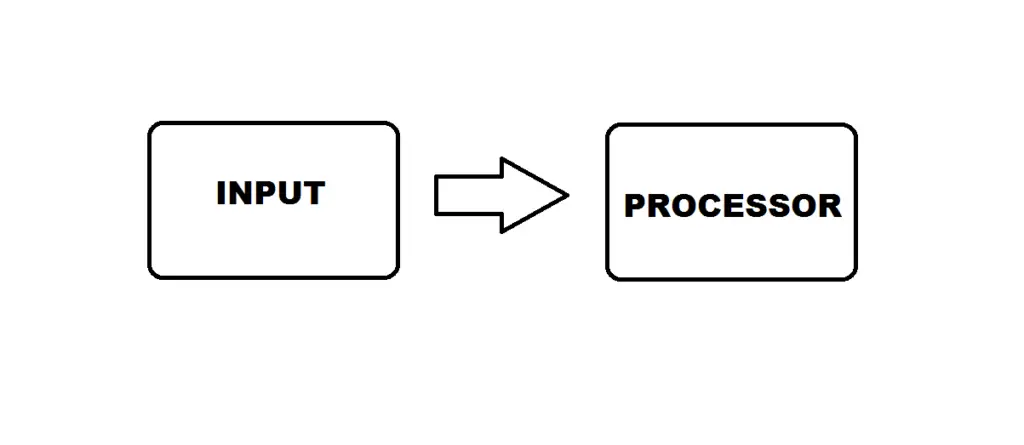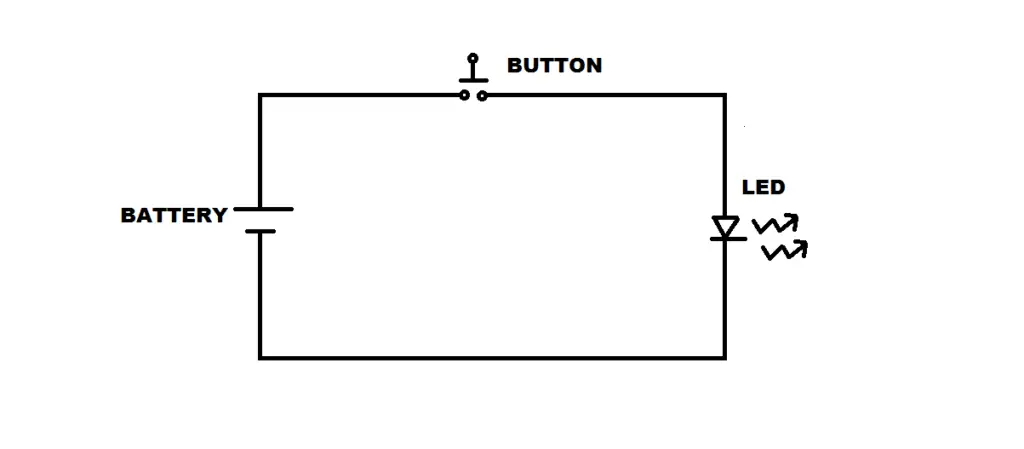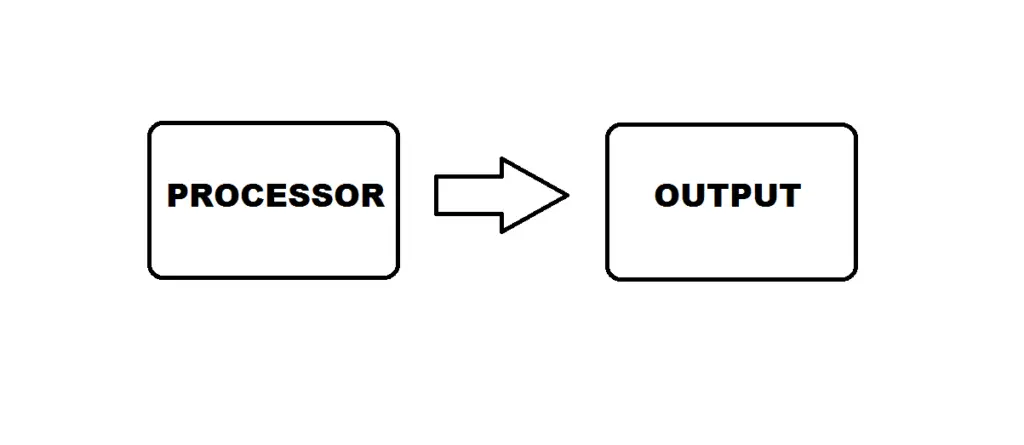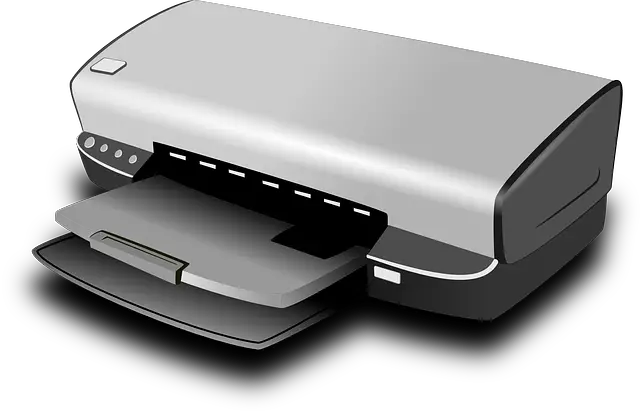Whether you need to print your homework, a greeting card, invitation, etc, a Printer is a computer peripheral that will be needed.
It is capable of converting digital versions of images and text into physical copies by printing it onto paper.
But, is a printer an input or output device?
A printer is an output device. Information (in the form of digital data) is sent to the printer by a host device (such as a computer). This information is then ‘printed’ by the printer onto paper. The main reason that a printer is an output device is that information is sent ‘out’ of the electronic system (I shall explain this in more detail in this article)
What is input and output device
To better understand why a printer is an output device, it will help to understand both Inputs and Outputs and see what are the main differences between them.
Input devices
An electronic system will usually include a processor at the center of its operation.
This processor can be a Microcontroller or a Microprocessor depending on the needs, and complexity of the application.
It is responsible for ‘processing’ information.
In this case, the processor is onboard the computer’s motherboard, which is essentially the brain of the computing system.
This information can be generated internally by the processor itself, or the information can be received via Inputs.
The reason for being called an input is because information, or power is entering the system. This can be best visualised by the diagram below.

An input device’s main job is reacting to changes in the environment or physical responses by a user which could be as simple as a button press.
The processor can then deal with the information as required.
A note to be made is that embedded systems are usually where you would find a Microcontroller or Microprocessor being used as the processing unit.
However, an input can also be part of a non-embedded system, which can be void of a microcontroller or microprocessor.
For example, a flashlight is a simple circuit that does not include a processing unit but includes an input like a button.

There are many different types of input devices available that provide different functionalities in different circuit setups.
Below is a list of some of the many;
- Buttons
- Mouse
- Keyboard
- Switches
- Sensors
- Temperature
- Humidity
- Light
- Colour
- Microphones
- Potentiometers
- Light Dependent Resistors (LDR’s)
Below are some common applications that use these input devices;
- Computing (Mouse, Keyboard, Webcam etc)
- Mobile phones (Keypad, Capacitive touch screen)
- Automobile (buttons)
- Entertainment systems (buttons, switches, potentiometers)
- Weather stations (Temperature and Humidity sensors)
Output devices
So, we have seen one half of an electronic system,where information enters it through means of power and information via physical changes in the environment also known as the Input.
The second half of the system is an Output.
An output can be best described as information or power leaving the system which can be visualised by the diagram below.

Once the information has been processed by the processor, it can then be sent out of the system into the real world via an output device.
An example would be displaying information on an Liquid Crystal Display (LCD).
Just like an input, outputs can be part of non-embedded systems as well.
Going back to the flashlight example, when the button (input) is pressed by the user, a light turns on. The light here is the output of this simple electronic system.
Below is a list of common outputs;
- Motors
- Servo
- Stepper
- Vibration
- Buzzers
- Speakers
- Displays
- Lighting
- Light Emitting Diodes
- Light Bulbs
- Electroluminescent wire
- Printers
Below are some common applications that use these output devices;
- Audio systems (Speakers)
- Entertainment (Displays)
- Computing (Printers)
- Interior decorating (LED, Light bulbs)
- Mobile phone (Vibration Motors)
Why a printer is an output device and not an input
So, now that we know the roles of both an input as well an output, we can dive into why a printer is an output device.
As we saw in the flow diagram of output devices, information is sent from processor to an output.
The printer is a device that receives digital information from a host device (like a computer), and then ‘prints’ this information as a physical media on paper, or whatever other surface it is capable of printing on.
The flow of information starts from inside the processing unit, and makes its way out toward the printer which is the main reason why it is an output device.
How a printer works as an output device
So, we have seen a printer’s main purpose is to convert digital data into human readable information which it then prints out onto paper.
Let’s take a closer look at how the printer works as an output device.
When it comes to the world of printring, there are many different methods used. But, the two most commonly used methods are Inkjet and Laser.
However the process of how a printer creates a physical copy of digital data remains the same.
Each printer achieves this using a driver or specialized software whose main job is to convert your image or text into a language that the printer can understand.
Your image or text is then transferred onto paper using a series of dots. These dots are so small that the naked perceives the end product as a solid image of a series of text and not dots.
While the process is the same across an Inkjet and Laser printer, what separates the two is how these series of dots are transferred onto paper.
Inkjet
Inkjet printers use a printer head that contains thousands of tiny holes which drop droplets of ink onto paper at printer speed.
The liquid ink used is either produced coloured dye, or a liquid that contains solid pigments.
Laser
Instead of using liquid dots, laser printers use dots that are made up of toner (fine power of solid particles).
How does a printer get connected as an output to a computer
Connecting a printer to a computer as an output nowadays is very simple. It only requires a couple of wires to do so.
The type of wires it uses is a Universal Serial Bus (USB) cable and a Power cable.
USB is a type protocol for connection, communication and power supply, which is specified for cables and connectors.
These cables are used for computers, peripherals and other other computers.
So, the printer can get connected to a computer and communicate with it using a USB cable.
However, newer printers do not require a USB cable as they are designed and have the capability to connect with a computer using Wi-Fi.
This can be advantageous as the printer does not have to be placed near the computer and can be connected to many host computers all at once.
Where can a printer be used as an output device?
A printer is commonly used as an output device with a computer or a laptop.
But, with the ability of new printers to communicate with host devices using wi-fi, printers can now be used as an output device with many other wi-fi capable devices such as Smartphones and Tablets.
This means you can now print your favourite meme using your smartphone.
What are other output devices similar to a printer
A printer is only one of the many output devices that a computer is able to send information to and control.
There are many other output devices that provide different functionalities that can be connected to a computer.
Below are some of the most common outputs used in conjunction with a computer;
- Monitor
- Speaker
- Headphones
- Lighting
- Projector
- Sound card
- Video card
What is the purpose of printer as an output device in a computer
A Scanner has the job of converting physical media into a digital format.
The printer on the other hand, as we saw previously, has the job of converting digital data into physical media.
With this ability, the printer lends its helping hand to many applications.
Personal – If you need to print form to fill, or a family photo, you will benefit from having a printer at home for personal use. The great thing is that you do not have to buy the most expensive printer out there. Since you won’t be using it all the time, personal use printers are designed for low volume prints while not sacrificing on quality.
They are also created to be compact and quiet.
General – General use printers are great if you need to print a wide variety of prints at a generally high volume and quality is not an issue.
Examples of general use applications include printer invitations for an event, posters for a garage sale and many more.
Business – Printers designed for business use are capable of printing at different sizes. They are not limited to your standard A4 paper size.
They are built to handle the high volumes of printing seen in companies while still producing high quality prints.
The ability to handle these high volumes is thanks to having larger ink cartridges which can carry more ink.
Below is list of the many other applications that apply to all types printers mentioned above (this is just a small list);
- Images
- Text documents
- Banners
- Invitations
- Pepakura
- Greeting cards
- Photos
- Screen printing
- Art projects
- Posters
- Forms
What are the features of a printer
When choosing a printer, you need to consider the applications you will be using it for.
Then accordingly you can decide what features you will require from your printer to best suit those applications.
While print quality and volume are the most obvious things to look at for a printer, there are other features.
Below are some other features to consider for a printer;
- Print speed
- Print quality
- Laser vs Inkjet
- Connectivity (Cable or Wireless)
- Size
- Support (from the company when things go wrong)
- User interface
Who can use a printer as an output device?
The printer is not restricted to a certain type of person or industry.
It is beneficial for personal and business use.
It can be used by anyone who needs to make physical versions of their digital data such as an essay, image, form etc.
It all comes down to your needs and applications.
Can a printer be used as an input device?
No, a printer cannot be used as an input device.
The printer does not send information to the computer.
That’s why it cannot be used as an input device.





